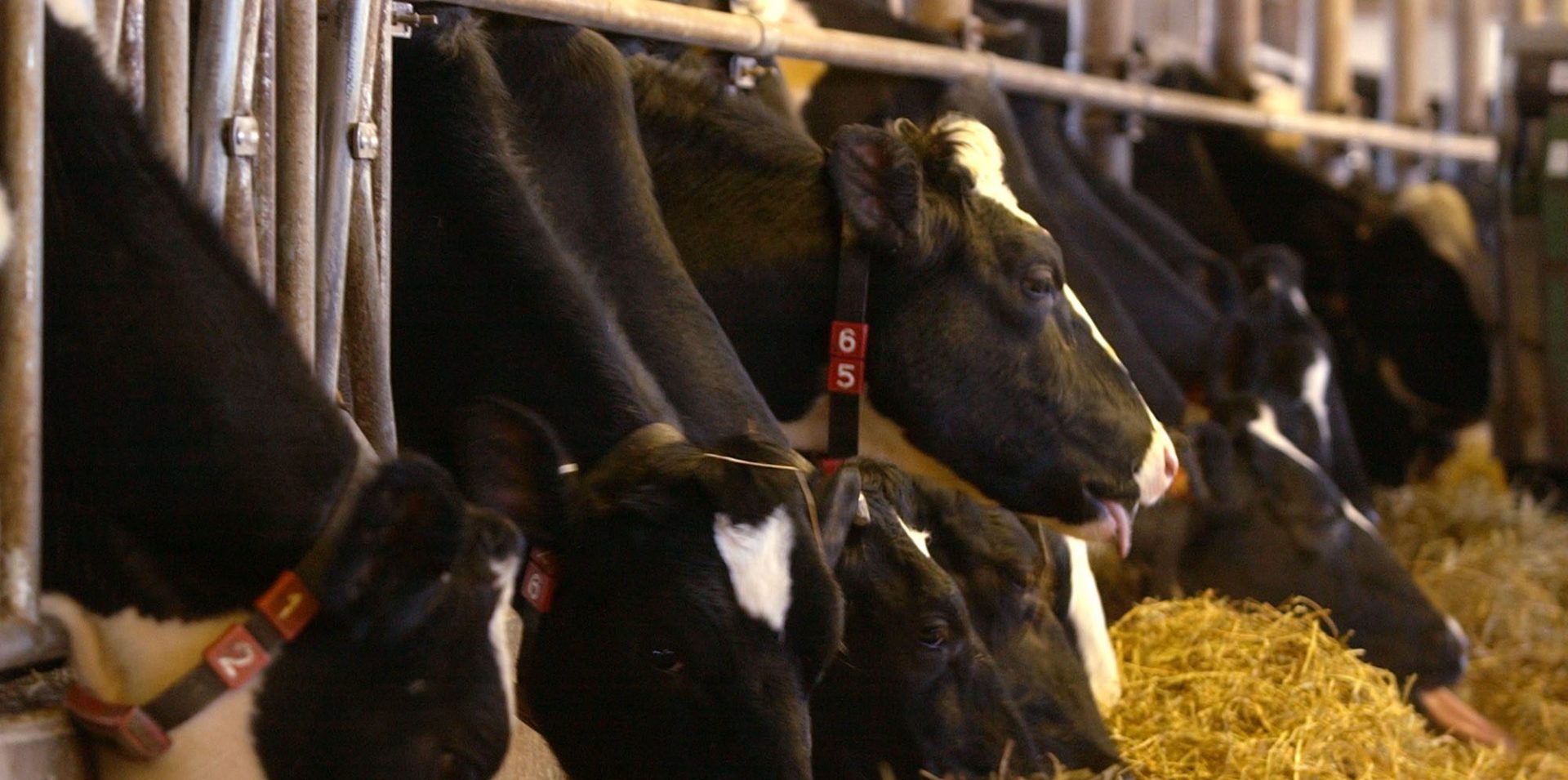
FILE: A herd of Holstein cows on dairy farm in Pennsylvania.
Bradley C Bowe / AP Photo


FILE: A herd of Holstein cows on dairy farm in Pennsylvania.
Bradley C Bowe / AP Photo

Bradley C Bowe / AP Photo
FILE: A herd of Holstein cows on dairy farm in Pennsylvania.
Farmers in the southern part of Pennsylvania will face higher temperatures and changes to the growing season that will place stresses on corn production and the dairy industry, according to new research.
The Northeast is the fastest-warming region of the contiguous United States. As StateImpact recently reported, the eastern half of the Pennsylvania has seen its average daily temperature rise about two degrees Fahrenheit, compared to 30 years ago. Going forward, the average ambient temperature in the Northeast is projected to warm by about 5.4 degrees Fahrenheit by mid-century, while the global average temperature rises by about 3.6 degrees.
In a paper published this month in the journal PLOS One, researchers used nine global climate models to analyze potential local impacts of the warming on corn production in three major dairy regions of the Northeast—State College, Pennsylvania; Syracuse, New York; and Landisville, in Lancaster County, Pennsylvania. They focused on corn because it’s a major feedstock for the dairy industry.
The researchers found farmers in the most southern point—Lancaster County—will likely have to shift planting dates and rely on irrigation to adapt to the warming.
New York and Pennsylvania are among the biggest dairy producing states in the U.S., ranking third and seventh, respectively, in 2017 for total milk production. Farmers in the central and northern regions analyzed — State College and Syracuse — are considered less at risk.
“We often hear a lot of generalizations about the impacts of climate change,” said study co-author Heather Karsten, an associate professor of plant science at Penn State University. “This is an example of how the regional impacts, even within the Northeast, are not the same.
Corn is considered to be a plant that could be relatively resilient to climate change. However, Karsten said it’s also vulnerable to very high temperatures.
Although the warming will extend the length of the growing season, she said that’s not necessarily a good thing for the health of the plant.
“Because the plants are maturing faster, there is not as much time for them to grow as large leaves, and they don’t accumulate as much carbohydrates, and that also reduces yield,” Karsten said.
For example, Lancaster County is expected to experience significantly more days above 35 degrees Celsius, or 90 degrees Fahrenheit, “particularly when the plant is producing pollen,” she said. “And that is a high-risk time for corn, because temperatures above 90 degrees are basically lethal to pollen.”
The study was funded by the U.S. Department of Agriculture’s Agricultural Research Service.
StateImpact Pennsylvania is a collaboration among WITF, WHYY, and the Allegheny Front. Reporters Reid Frazier, Rachel McDevitt and Susan Phillips cover the commonwealth’s energy economy. Read their reports on this site, and hear them on public radio stations across Pennsylvania.
(listed by story count)
StateImpact Pennsylvania is a collaboration among WITF, WHYY, and the Allegheny Front. Reporters Reid Frazier, Rachel McDevitt and Susan Phillips cover the commonwealth’s energy economy. Read their reports on this site, and hear them on public radio stations across Pennsylvania.
Climate Solutions, a collaboration of news organizations, educational institutions and a theater company, uses engagement, education and storytelling to help central Pennsylvanians toward climate change literacy, resilience and adaptation. Our work will amplify how people are finding solutions to the challenges presented by a warming world.